4 simple steps to get UTM Parameters into Sugar CRM
Follow these 4 steps to capture UTM parameters in Sugar CRM and run reports that show which marketing channels are attracting leads that convert into opportunities & customers.
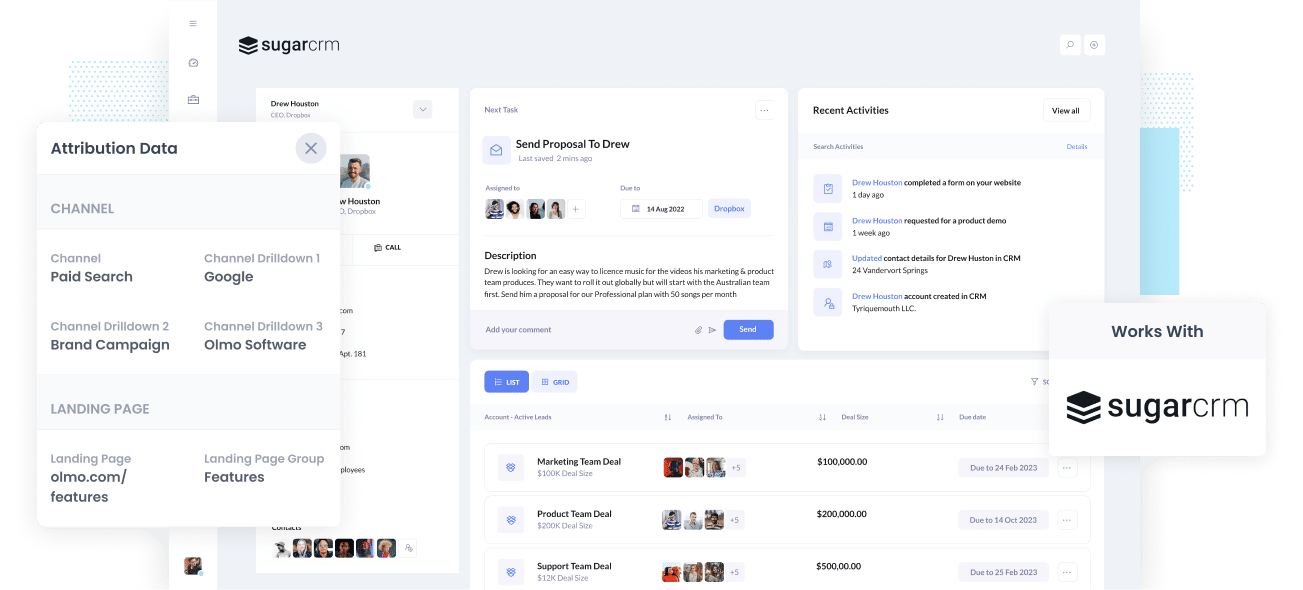
For a business to grow, marketers need to know what marketing channels, content, and campaigns generate leads and customers at a positive ROI. Using this data, you can then allocate more time and resources to the most successful marketing channels.
If you have no way of knowing where your leads are coming from or which marketing channels are working, then you're wasting a lot of time and resources. You're also missing out on the opportunity to maximize your revenue while it lasts.
The best way to measure success is by tracking the source of every lead and opportunity in your CRM. With this data, you can run reports that show you where your leads and sales originate, and double down on those marketing efforts.
In this article, we'll show you how to capture UTM parameters in Sugar CRM so you can run these kinds of reports.
4 steps for capturing UTM parameters in Sugar CRM
Using Attributer to capture UTM parameters in Sugar CRM is easy. Here's how to do it in 4 easy steps:
1. Add UTM variables to your ads
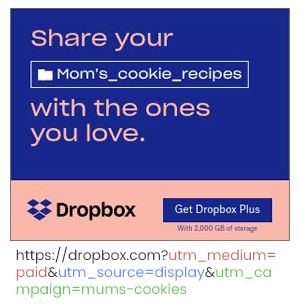
To track where leads are coming from in your CRM, you must add UTM parameters to all your ads and marketing campaigns. UTM parameters will allow Attributer to capture tracking data and send it to your CRM via Sugar CRM.
Make sure to include UTM parameters in ALL inbound links to your website, including social media posts, social media bios, paid ads (Facebook, Google, Bing, Pinterest, etc.), guest blogs, influencer campaigns, and any other marketing channels."
2. Add hidden fields to your forms
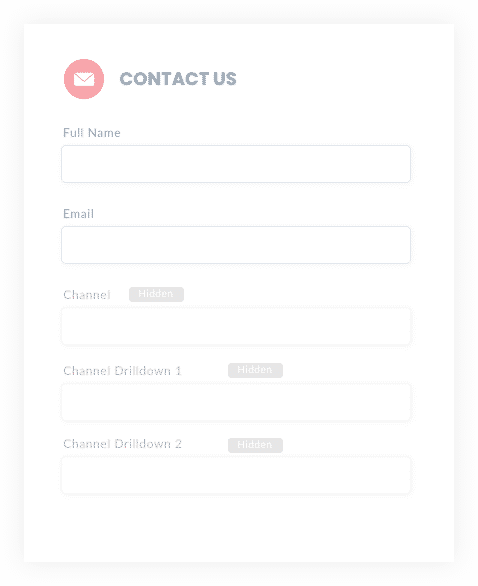
The second step is add hidden fields to your website forms so that Attributer can pass through the UTM parameters when a user completes a form.
As the name suggests, hidden fields are invisible to the user but still exist on your form behind the scenes, meaning Attributer can identify and complete these fields with captured UTM parameters.
You'll need to add the following six hidden fields to your website forms:
- Channel
- Channel Drilldown 1
- Channel Drilldown 2
- Channel Drilldown 3
- Landing Page
- Landing Page Group
Fortunately, form tools like Gravity Forms, Typeform, Jotform, etc all make it super easy to add hidden fields and it's as simple as dragging and dropping them into your form.
3. Attributer automatically completes the hidden fields with UTM data
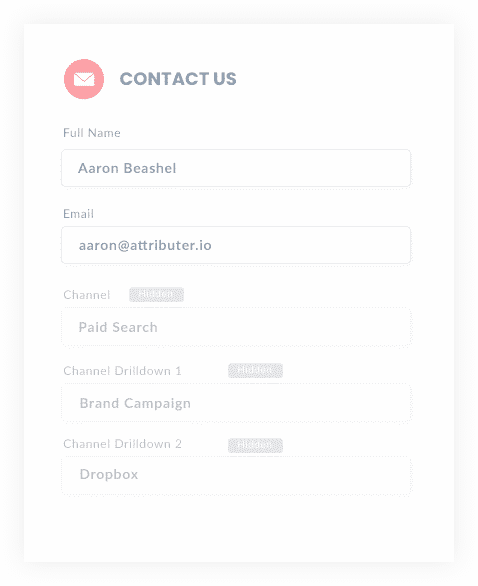
Now that everything is set up, Attributer will capture incoming tracking data, including any UTM parameters, and add these to the hidden fields in your form and pass them into Sugar CRM.
Let's take a quick look at how Attributer works. Let's look at a Dropbox ad for a demo request as an example.
A user Googles "ways to share large files" and finds a Dropbox ad in the paid results. The user clicks the ad and fills out a form to request a demo.
In the form's hidden fields, Attributer will add the following tracking information (depending on what UTM parameters Dropbox is using):
- Channel = Paid Search
- Channel Drilldown 1 = Google
- Channel Drilldown 2 = Brand Campaign
- Channel Drilldown 3 = Dropbox
In addition, Attributer will also include the landing page information, which might look something like this:
- Landing Page = www.dropbox.com/features/share
- Landing Page Group = Features
4. UTM parameters are passed into Sugar CRM
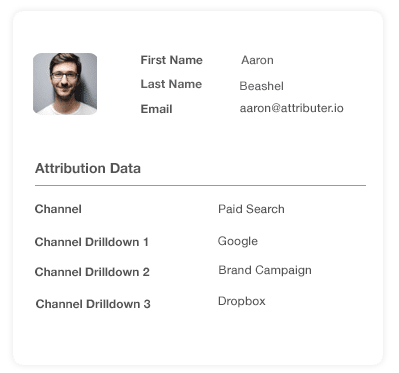
Finally, when the user submits a form the UTM parameters are captured alongside their details (like name, email, phone number, etc.) and sent into Sugar CRM.
What is Attributer?
Attributer is a tool that makes it easy to capture UTM parameters and other tracking data and send it to Subar CRM for reporting.
For those that are interested, here is a brief overview of how Attributer works:
When you place the Attributer code on your website, the tool will scan all incoming traffic's technical data, such as UTM parameters, HTTP referrer information, device, etc.
Attributer then categorizes visitors into one of several channels (Paid Search, Organic Search, and Paid Social are good examples) and stores that data in the user's browser as a cookie.
When the user completes a form on your website (provided you have set up the hidden fields), Attributer will send the UTM parameters and other attribution data along with the details the user completes (name, email, mobile, etc.).
Attributer was created by Aaron Beashel, a B2B marketing consultant who saw that while Google Analytics was great, it only told you about visitors to your site and there was a need for a tool to identify which channels were producing leads, customers & revenue.
"I originally built it to use on my client's website but after a while, I realized it could be useful for businesses everywhere."
Why using Attributer is better than capturing raw UTM parameters
There are several tools that capture UTM parameters in Sugar CRM, so why create Attributer?
Attributer is more than a UTM capture tool. It captures, categorizes, cleans, and sends data to CRMs better than any other tool on the market. Here is how Attributer outperforms other UTM capture tools:
1. Captures all traffic
Attributer doesn't just look for traffic with UTM parameters; instead, it monitors and captures data for ALL users on your website. Unlike other tools that only work when UTM parameters are present, Attributer will categorize all users (i.e., Organic Social, Organic Search, Direct, Referral, etc.).
This means every lead in your CRM will have relevant tracking data, not just those who followed your UTM links. When it comes time for reporting, your data is more comprehensive and accurate.
2. Remembers the data
Most other tools for capturing UTM parameters require the UTM parameter to actually be present on the page where the form is completed. This is a problem because the page the user completes the form on may not be the same page they landed on from your ad.
As an example, imagine someone clicks one of your Google Ads and goes to a landing page you created for that campaign. Once they’re convinced your product/service is amazing, they click the ‘Contact Us’ button and are taken to a different page to complete your form. In this scenario, the UTM parameters would be lost along with your ability to report on your campaigns.
However, Attributer works differently. It stores the UTM parameters in a cookie in the user’s browser, meaning that whatever page a user completes the form on Attributer can still send through the data.
3. Provides cleaner data
When you just capture raw UTM parameters, you usually end up with a lot of messy data.
For instance, imagine some of your Facebook Ad campaigns are tagged with UTM_Source=Facebook (capitalized), others with UTM_Source=facebook (uncapitalized), and others with UTM_Source=fb. This is common if your Facebook Ads have been managed by different people or agencies over time.
When you try to run reports in Sugar CRM to see how many customers come from your Facebook campaigns, there will be 3 different sources that you'll need to stitch together.
However, Attributer takes into account the possibility for these inconsistencies and will attribute a customer to Paid Social regardless of capitalization and other inconsistencies.
4. Captures landing page data as well
One of the keys to successfully attributing leads is looking not just at the channel they used to get to your site, but the content on your site and how that is performing in terms of attracting leads there.
Which is why Attributer doesn't only capture UTM parameters but also includes landing page data.
For example, imagine a user lands on attributer.io/blog/capture-utm-parameters. Attributer will capture the landing page URL (attributer.io/blog/capture-utm-parameters) and the subdirectory (/blog).
With the landing page and subdirectory, you can now analyze individual pages and content groups to answer questions like 'How many leads do we get from our blog?' and 'Which blog posts get us the most leads?'
Wrap up
Attributer does more than capture UTM parameters for Sugar CRM. It's a tool that will deliver accurate tracking data about ALL your users, so you know precisely how leads and customers arrive at your website.
Ready to see how Attributer can supercharge your sales and lead generation? Sign up for a 14-day free trial today.
Get Started For Free
Start your 14-day free trial of Attributer today!

About the Author
Aaron Beashel is the founder of Attributer and has over 15 years of experience in marketing & analytics. He is a recognized expert in the subject and has written articles for leading websites such as Hubspot, Zapier, Search Engine Journal, Buffer, Unbounce & more. Learn more about Aaron here.
